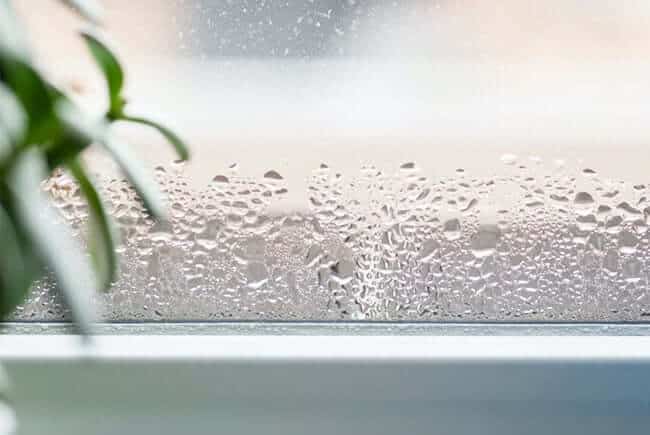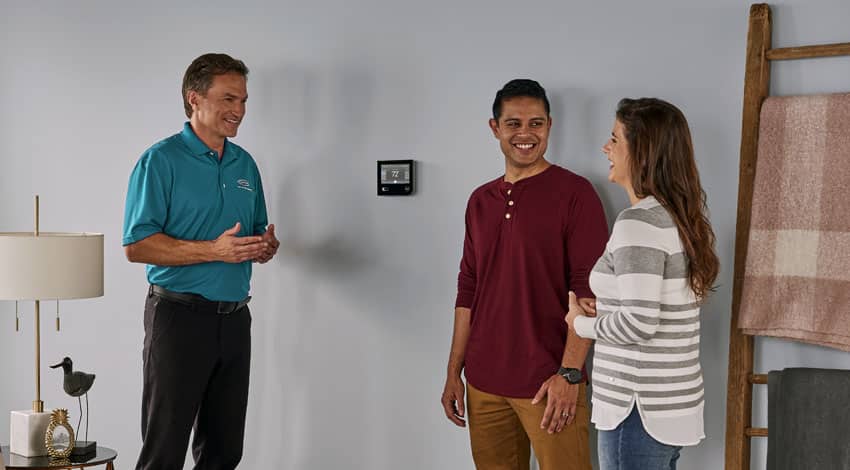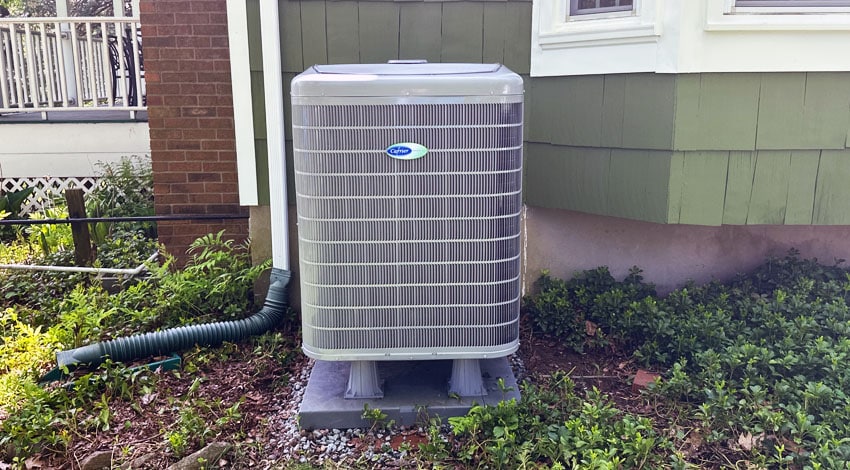
As Summer arrives in New Jersey, temperatures start to rise. Unfortunately, this also means higher humidity levels for both the outdoors and inside our homes.
Humidity is optimal for household comfort when it falls within 35% – 50%. However, when it exceeds that point, some indoor problems can arise. The three most common issues are:
- Appliance or furniture damage
- Mildew and mold
- Pest Infestation
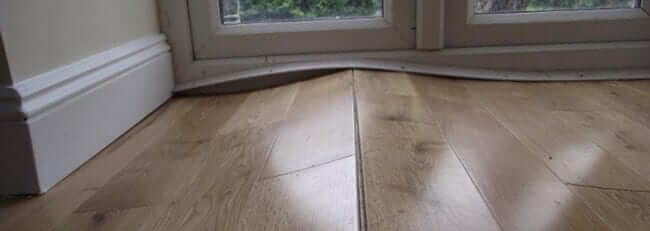
1. Appliance or furniture damage
Furniture material and electronic appliances can be sensitive to moisture. Materials can degrade faster, and electronics might not function appropriately if moisture from too much humidity builds up.
Frequent complaints that people have are the following:
- Floorboards start caving in;
- Insulation is wet;
- Wall paint starts peeling or chipping off;
- Electronics short circuit;
- Mold grows on furniture or fabric;
- Woodwork shows signs of decay; and
- Drywall starts wearing down.
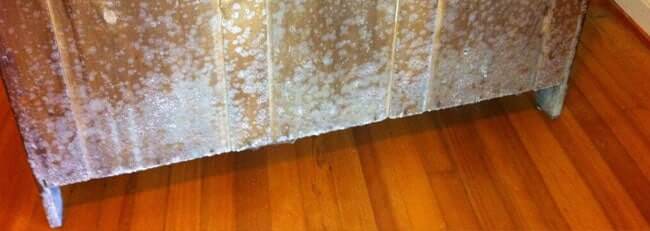
2. Mildew and mold
The peskiest of your problems will likely be mildew and mold. Don’t be surprised to find it growing on all kinds of stuff in your home.
What’s the relation of high humidity levels with faster mildew and mold growth anyway? Let’s take a quick look at what they need to thrive:
- Moisture – All that moisture is necessary for those microorganisms to grow. Naturally, they feed off on the moisture that higher humidity levels bring in the air and things.
- Warmth – The ideal temperature for molds range from 40°F to 100°F.
- Food – Mold and mildew need an organic source to feed. Unfortunately, our houses contain all the meals they need, like wood, dust, and leather.
The Summer temperatures, coupled with moisture and a food source make your home a welcoming place for them to thrive. Aside from your items falling prey to them, molds can also pose a potential health risk. If it gets too bad, you will only be able to remove them by hiring a mold specialist.
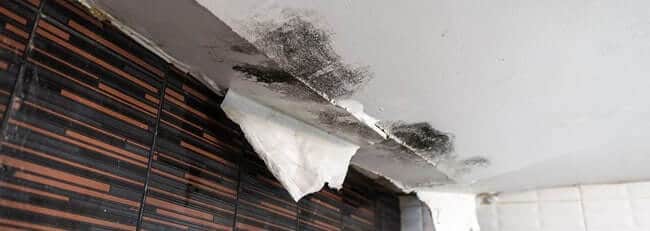
3. Infestation
It’s alarming to see pests making your house their home. That is why homeowners invest in pest prevention methods and pest killing services to remove them. Unfortunately, having higher humidity means that your house becomes more conducive to pests and insects.
The reason for that is some pests make mildew and mold as a primary food source. If you allow untreated mildew and mold to grow in the corners of your home, that makes potential pests happy to eat them. Humidity is also welcoming to many insects like cockroaches and mites.
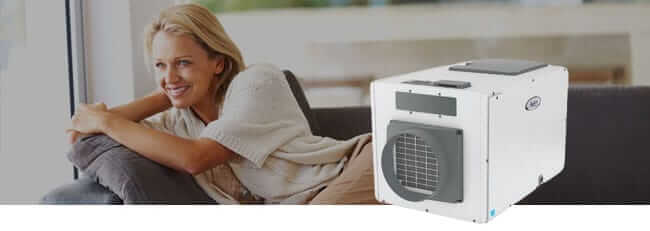
High Indoor Humidity Prevention
Now that you know the potential issues that can be caused by increased humidity, you are probably thinking about how you can prevent them from arising in the first place. Here are our simple tips that can go a long way to ensure that your indoors are healthy:
1. Use an indoor dehumidifier
Reducing humidity has never been easier than with an indoor dehumidifier. Some portable models allow you to bring it in any room within the house. They’re easy to find too. Your local hardware or home improvement shop likely has some for sale.
If you want broader coverage of your indoors, there are whole-home dehumidifier options too. They are naturally more expensive, but they work wonders to always keep your house dehumidified. You will need a professional installation service since the dehumidifier system will be installed in your home ductwork.
2. Maintain your air conditioning
Most homes have air conditioners already, which is a reliable way to maintain dry humidity levels indoors. Air conditioners keep your rooms cool by removing the moisture in the air, making your environment dryer.
The air conditioning system’s indoor air handler contains the evaporator coil, which carries out the primary dehumidifying functions. The evaporator coil takes the warm air and absorbs all the moisture it contains to dispel it outside the room. This recycled dehumidified air is blown into your home, and the process continues to keep your rooms cool and dry.
To keep the AC system running correctly, you will want to have it professionally maintained annually. Otherwise, its dehumidifying functions will start to lose effectiveness. If the evaporator coil is worn down and hasn’t been serviced for long, it accumulates dirt and dust, which creates a wall between the coil and air. Even worse, all the dirt and moisture around the coils are another place where mold can grow.
All those problems make the coils lose the ability to absorb moisture effectively. If you haven’t had your air conditioning serviced for a while, maybe it’s time to pick up the phone and call a professional.
3. Install ventilation fans
Showering and cooking tend to produce moisture that might get trapped indoors if there is no proper ventilation system to move them outside. Having ventilation fans installed in the bathroom and kitchen will stop moisture from settling and accumulating inside.
4. Move your plants outside
Plants naturally create moisture through their transpiration process. This is great if your home’s too dry during the winter season, but not during the humid summers. It’s good practice to keep your plants outside when you are having high humidity problems.
5. Take cold,quicker showers
It is tempting to stay in a refreshing long-running shower during the summer. However, this means that you are producing more moisture within the bathroom, and we know that molds love bathrooms for their moist environment. Keep your showers as quickly as possible to avoid extra moisture build-up. Cold showers are also better since they don’t produce as much moisture as warm showers do.
Conclusion
Now that you know the most common problems caused by high humidity levels, and how to prevent them, you are more prepared to deal with the summer. Keep your home healthy, and don’t forget to enjoy the summer!


